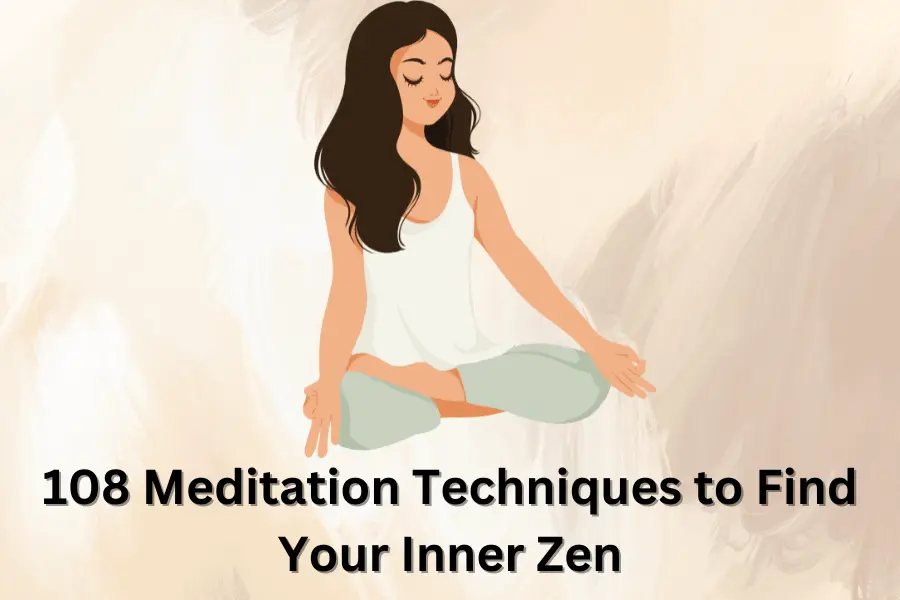The Vigyan Bhairav is a treasure trove of wisdom and spirituality, which is waiting to be explored, learned, and applied to our own lives. There are 112 meditation techniques shared by Shiva in the Vigyan Chairav, but 108 types of meditation is a way in which you can begin to explore and find your pathway to the ultimate reality of this universe
In this article, we will be providing you with a deeper overview of 108 types of meditation in the Vigyan Bhairav, so that you can find your inner Zen. It will help you become a better person, mute out anxieties of this world, and realize your own potential.
The Mystical Significance of the Number 108
In the Hindu tradition, the number 108 has mystic and spiritual significance. There are many customs around spirituality that adhere to the number 108, be it mantras or chants or even when setting a passcode for the locker at home. You will find most people of the Hindu faith giving greater importance to this number
However, for those not accustomed to Hinduism, this can seem confusing. Well, 108 is a significant number because of the belief that 108 is the basis for creation for all things in this universe. The Vedic traditions state that 108 represents mathematics and sciences that establish the core of this universe and ultimately establish the core of the existence of any living thing within the universe
108, therefore is considered to have a Shakti or spiritual power attached to it that brings the inner spirituality of a person at par with outer universal existence. Although, it is not just Hinduism, even in Buddhism the number 108 has significance because of its universal basis. All chakras are aligned at 108, and a guru and student are told to sit at a distance of 108 because it is believed that a person and God within them is at a distance of 108.
Spiritual Meaning in Hinduism and Buddhism

- 108 Beads on a Mala for Mantra Meditation
During a puja, a guru or pundit will ask you to repeat the mantra exactly 108 times and therefore the beads in a mala are also 108. When chanting a mantra 108 times, it will cover the whole galaxy and align the chakras as well
- 108 Names of Deities
In Hinduism, it is also believed that there are 108 names of every God. In Buddhism, there are 108 paths to doing good and sin. So, 108 is a significant number
- 108 Sacred Sites
A Pitha is a sacred site, where people often do a pilgrimage to attain spirituality and tranquillity. There are over 108 sacred sites or Pithas across the Sub-Continent.
- 108 Virtues
Although there are 112 meditation techniques, but the number 108 also constitutes as virtues that must be present in a person. This view pervades across both Hinduism and Buddhism.
There are numerous other mystical sources that highlight the significance of 108. The Earth is 108 times less than the diameter of the sun, the distance between the Earth and Sun is 108 times the diameter of the sun, and the distance between the Earth and the Moon is 108 times the moon’s diameter.
Read Also: 12 Types of Meditation
History of the Vigyan Bhairav Tantra’s 112 Meditation Techniques
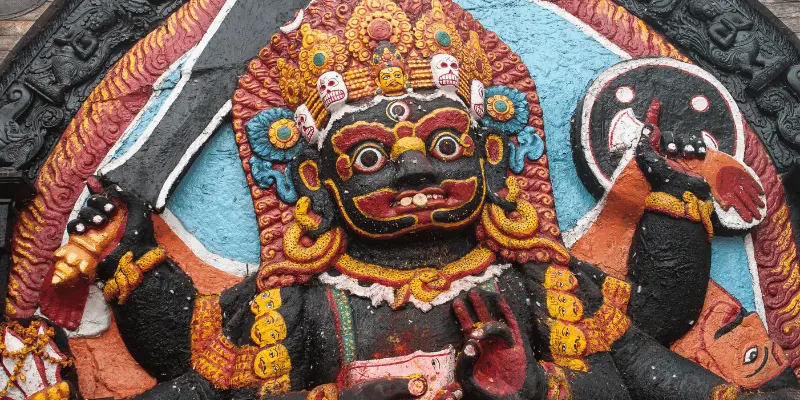
The Vigyan Bhairav Tantra is also known as the Shiva tantra, named after the one who taught it; Lord Shiva first. The 112 meditation techniques in this tantra date back to ancient Hinduism, being within Hindu tradition from hundreds and even thousands of years ago. The original is in Sanskrit language, while chants taught to the Devi have been explained by scholars like Osho. This type of meditation supports the Kriya Yoga, which is meant to understand the true reality of the universe. One’s consciousness becomes open to the book of secrets just like a lotus flower upon blooming, through prayer beads and one’s small self becomes one with the Atman.
Ancient Hindu Text Dating Back To 6th Century Ce
The origins of this text are believed to stem from a conversation between the God Shiva and Goddess Parvati, also known as Shakti. The goddess asks Shiva numerous questions about the reality of the universe, the nature of reality, the fundamentals of this world, and so on. Lord Shiva replies by way of 112 ways one can enter into a transcendental state to understand the true reality of this world and attain true consciousness
This tradition is rooted in Kashmir Shaivism and is believed to be written by Guru Keyuravati, sometime around the 6th and 7 centuries. Based on 163 stanzas, it is a spiritual practice that involves 108 cycles, and 7 chakras and converges every type of yogi position, meditation, and prayer that enables one to attain self-realization as well as spiritual well-being.
Outlines 112 Meditation Methods for Self-Realization
The main purpose of the text are the 112 meditation techniques to find the ultimate reality of nature and oneself. Of the 108 Upanishads, the Vigyan Bhairav Upanishad is the only one that tackles true reality of this universe. In this the mind becomes one, free from any impure thoughts that are distractions and ultimate reality prevails over one’s earthly reality. The 112 meditations were also later abbreviated to 108 key techniques
10 Most Popular Types of Meditation
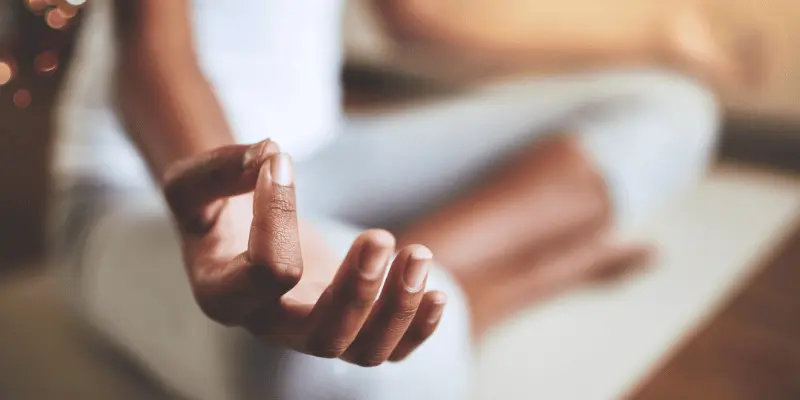
Going into the 112 meditative techniques in the original text or even the 108 techniques completed in nine rounds is out of the scope of this article. Instead, here are the most common meditative methods to follow that lead to the same ultimate reality:
1. Mindfulness
It is a type of meditation that makes you mindful of your own self. Sensitivity to one’s feelings, breathing, heart and even a twitch of a nerve can be felt through mindfulness. Customer reviews or experiences of those who follow mindfulness meditation show improvement in mental health as well as contentment with one’s situation in life
2. Transcendental
In this meditation, you practice to rise above your anxieties, worries, and thoughts, until you reach a transcendent state that makes you one with the universe. Look upon the transcendent state from the teachings of Vigyan Bhairav Tantra as a way to attain wholeness with the Brahma
3. Kundalini
Kundalini is also called Shakti and like the Goddess Shakti, this meditation helps you move past your own ego and into the reality of the universe. Kundalini meditation, although is different because it focuses on spiritual energy that is at the base of your spine. In Ayurveda, experience may dawn between two breaths, with the attainment of divine consciousness.
4. Zazen
Rather than Hinduism, this meditation stems from the philosophy of Buddha. Buddhism teaches a state of Zen, which is free from all judgments and goals that bring anxiety in this world. With Zazen meditation, you enter a meditative state that introduces you to your true self. Sit in a comfortable posture and let form fill with breath essence without blinking or any outward motion. You find the ultimate reality in this yogic position.
5. Loving-Kindness
In this type of meditation, you are focusing your energies on love and kindness. Whether it is loving and being kind to yourself or extending the same love or kindness to another person, this meditation helps to drive out negative emotions. As breath comes in, the breath turns negative feelings out, and radiant one blooms.
6. Chakra
Chakras begin from the top of the head to form the heart chakra, naval chakra, and to the lowest point of the spine. With chakra meditation, your breath curves through these energy centers, enabling a universal pause and then a free-flowing sushumna. In Hindu philosophy, sushumna is an illusory energy that flows through the 7 chakras, as long as it is free-flowing, you are happy and content.
7. Mantra
Mantra meditation requires continuous chanting of a term or word to form an unwavering energy that gets rid of all other negative energies that you have hoarded. It can either be moments before sleep or during sun salutations early in the morning, mantra meditation sucks something negative out and helps you ground yourself
8. Pranayama
A meditation that plays on your breathing mechanisms is called Pranayama meditation. It helps you take control of your breaths, easing in and out to center your energy. There are 12 postures of meditation to follow, and it is practiced in both Buddhism and Hinduism
9. Progressive Muscle Relaxation
This is a therapeutic meditation technique, which entails the removal of all tension from the muscles and free-flowing body. Then in a meditative state, you are asked to tighten a muscle, so that you can feel what a tense muscle is. It helps with aches over the body and overall fosters great physical health.
10. Walking
Walking can be done meditatively. It might seem impossible, but you can train your brain to walk in a meditative state. It requires tracing your steps back and forth and focusing on one aspect of nature to help you focus.
Benefits of Daily Meditation for Mind, Body & Spirit
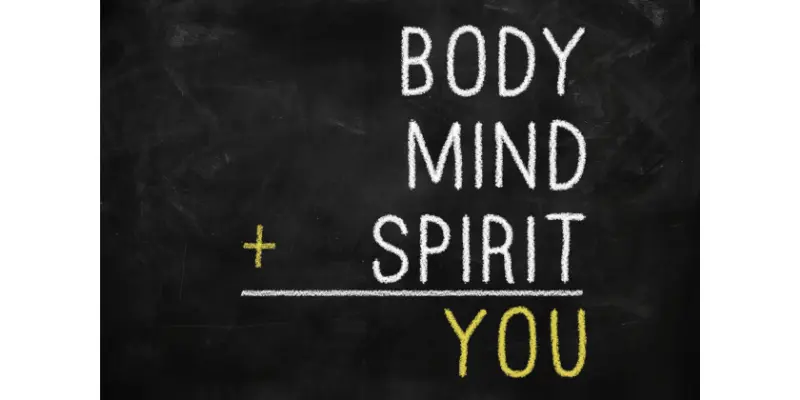
With these 10 types of meditation, we hope you can choose one that meets your needs and helps you begin the journey of finding the ultimate reality of this universe. It may be hard at first, but with practice, you can also have a free-flowing spiritual energy. If you still feel demotivated, then here are a few benefits of opting for meditation daily:
- Reduced Stress and Anxiety
As you practice mindfulness every day, thoughts that bring anxiety and stress also reduce. Self-reflection helps you get rid of feelings that are only negative
- Increased Focus and Concentration
In any type of meditation, you learn to remove extra thoughts, feelings, and distractions. When you repeat this practice every day, it naturally makes you better at concentrating on certain things and reducing all distractions
- Lower Blood Pressure
Not only improved mental health, there are also key physical benefits. The foremost of these is lower blood pressure. As anxious thoughts reduce, the stressful situations that cause high blood pressure are also managed, leading to a decrease in blood pressure
- Decreased Depression
With meditation, you learn to manage triggers and overcome them. Feelings and thoughts that are causing you depression can then be removed or reduced, making you a happier person
- Improved Immunity
Research has shown that immunity improves with meditation. Your immune system can often work against the body, so meditation helps you calm the immune system
- Deepened Self-Awareness
Self-reflection leads to greater self-awareness. In meditative practice, you visit deeper and deeper into the true self and then identify your own pros and cons
Meditator Reviews & Success Stories
- Testimonials and Examples
Anne: I found meditation to uplift my mood. Whenever I felt bad because of stress from work, I meditated for 15 minutes and instantly felt better
Martha: it helps me ground myself. I can be hurtful with my words, but meditation has helped me be more kind towards others and myself
- Quotes from Meditators
‘Life changing’, ‘transformative’, ‘exciting’, and ‘cathartic’
- Personal Experiences with Various Techniques
Gia: I do mantra meditation every week and my chants are for re-affirmation to boost my confidence. Ever since I’ve been doing mantra meditation, I have applied to jobs, done public speaking, and made new friends, all things which is was previously too shy to do
Carl: I follow transcendental meditation. I am very new to it, so I won’t say that I’ve reached the transcendent stage, but even in this initial stage it has helped me reduce distracting thoughts and get more focused.
How to Get Started With a Meditation Practice
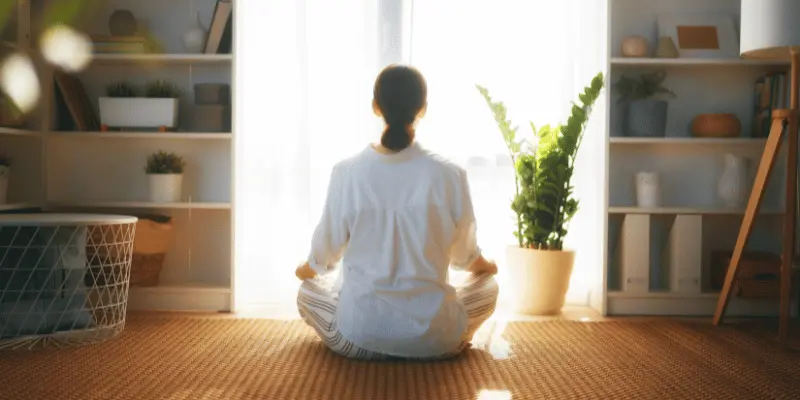
Getting the Basics Right
You have to begin by the very basics right. Until and unless the basics are correct, it is unlikely you can become good at meditation. Things to note are:
- Posture
- Setting
- No sound
- No distracting lights
- Silence
Beginner-Friendly Tips and Guidance
- Start with just 5-10 Minutes per day
- Pick a corner to meditate and make it comfortable for you
- Identify a time of day, when meditation is possible
- Enroll yourself in a class
Types of Meditation Made Easy
- Mantra meditation: pick a chant that resonates with you
- Mindfulness meditation: be comfortable and without distractions
- Transcendental meditation: enter a class and seek professional guide first
FAQ’s:
Q. How Many Types of Meditation are there?
A.There are a lot different types of meditations, like
- Mantra meditation
- Zazen meditation
- Chakra meditation
Q. What is the Shiva Method of Meditation?
A.There are 108 types of meditation in the Shiva method, including everything from mindfulness to transcendental meditation
Q. Which Type of Meditation is More Powerful?
A. Transcendental meditation is considered to be the most powerful and also the most challenging type of meditation. It works differently for everyone and connects you to universal consciousness
Q. What are the Mantras for Shiva Meditation?
A.
- Om namah Shivaya
- Gayatri mantra
- Lingashtakam mantra
Q. What is Deepest Meditation?
Mindfulness meditation is the deepest meditation. It helps you get to know yourself, truly. Every time you become mindful, a new thing is discovered
Q. What are 112 Techniques?
A. 112 techniques of meditation is part of the Vigyan Bhairav Tantra, which is an ancient Hindu tradition of meditative techniques. The 112 techniques are meant to help you realise the true meaning of reality, existence and this universe
Q. What is Vigyan Vaibhav Tantra 112 Techniques?
A. When Goddess Shakti asks God Shiva for the meaning of this universe, reality of existence and universal consciousness, Shiva answers by revealing the Vigyan Vaibhav Tantra that is composed on 112 techniques. If we apply it, it will help us attain the ultimate truth
Q. Which Type of Meditation is the Best?
A. This is subjective because best type of meditation for you depends on your needs and requirements. While some feel content with chakra meditations, other might find it challenging. Therefore, we recommend going through the list of 10 most common meditations, trying them out and sticking to the one that works for you.

